In the world of epic fantasy, few names loom as large as Brandon Sanderson. His novels are mammoth, often exceeding 400,000 words. The audiobook for The Way of Kings, for instance, is a staggering 45 hours long. For years, these beloved audiobooks have been brought to life by the legendary narrating duo, Kate Reading and Michael Kramer. Their voices are, for millions of fans, the definitive sound of Sanderson's universe.
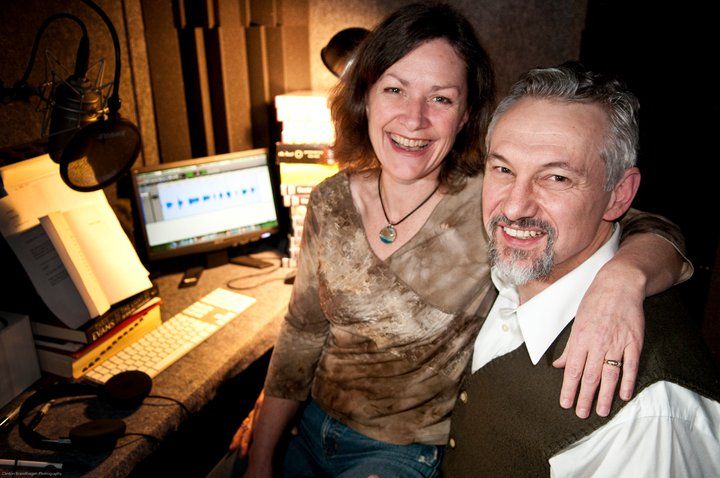
But what happens when, on day three of a two-week recording session, one of them catches a cold? What happens if a microphone is accidentally moved by half an inch, subtly changing the audio's character? For a 5-minute YouTube video, these are minor issues. For a 45-hour audiobook, they are catastrophic, creating jarring inconsistencies that can pull a listener right out of the story.
This is the brutal, unspoken reality of long-form audio production. It is a marathon of vocal performance where the enemies are not just misspoken words, but vocal fatigue, fluctuating energy levels, and the sheer physical impossibility of sounding exactly the same, hour after hour, day after day. It's why many authors who dream of narrating their own books quickly abandon the idea after facing the Herculean task.
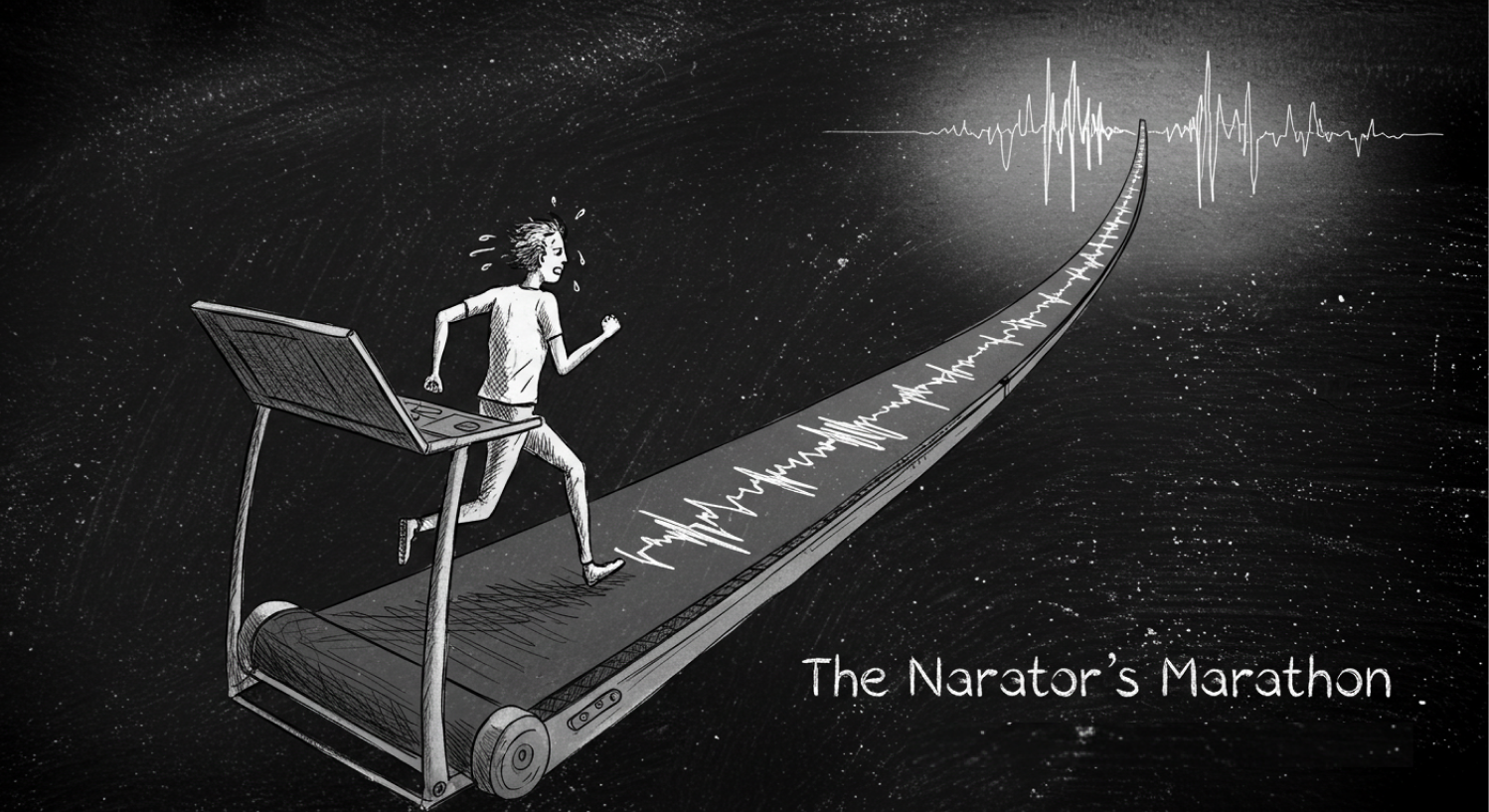
Now, a new technology is emerging as the solution to this age-old problem. AI Voice Cloning is not just another text-to-speech tool; it is a "perfect consistency engine" that eliminates vocal fatigue and day-to-day variations. It offers a future where an author’s voice can narrate a 60-hour epic with the same clarity and tone in the last sentence as the first, and where a single correction doesn't require a costly trip back to the studio.
This report will investigate how AI voice cloning is revolutionizing the production of audiobooks and online courses, moving beyond the hype to document the real-world strategies being used by authors, narrators, and educators to create extended audio content at a higher quality and a fraction of the effort.
The Inconsistency Tax: The Hidden Enemy of Long-Form Narration
The core challenge of recording an audiobook or a comprehensive online course isn't just reading the words aloud. It's paying the "Inconsistency Tax" - the cumulative degradation of quality caused by human and environmental factors over extended periods.
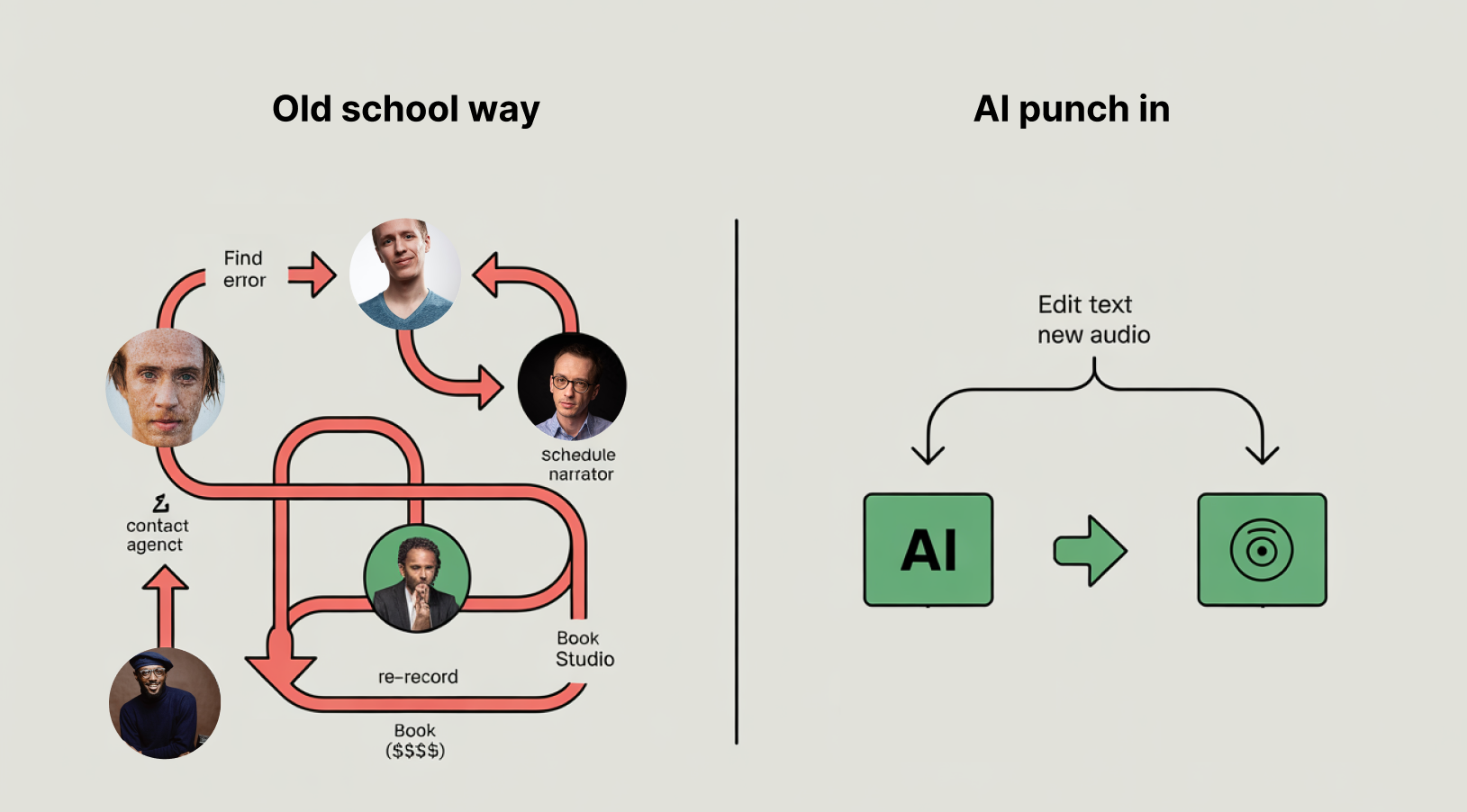
- Vocal Fatigue: After hours of speaking, the voice naturally changes. It can become raspy, develop a "vocal fry," or lose its resonance.
- Performance Fluctuation: The narrator's energy and mood on a Monday morning will be different from a Friday afternoon, leading to subtle but noticeable shifts in tone and pacing.
- Technical Gremlins: A change in room temperature, a different shirt that reflects sound differently, a slightly adjusted microphone - all can alter the recording's acoustic profile.
- The "Punch-In" Problem: Months after an audiobook is finished, the publisher might find a small error. The narrator is called back to "punch in" a corrected sentence. But their voice has changed. The original microphone might be unavailable. Matching the original recording's tone and ambiance is an audio engineer's nightmare.
FROM THE TRENCHES
"The hardest part about narrating your own audiobook is the stamina. Not just vocal stamina, but mental stamina. After 4 hours in a booth, you start making mistakes, your pacing gets sloppy. I had to re-record an entire chapter of my first book because it sounded like I was rushing to get to lunch."
Joanna Penn, Bestselling Author and Host of 'The Creative Penn' Podcast, via her blog.
The Digital Voice Twin: A Perfect Take, Every Time
Voice cloning directly attacks the Inconsistency Tax. By analyzing a short sample of a person's voice, the AI creates a digital model - a "digital twin" - that captures its unique timbre, cadence, and pitch. This model can then narrate thousands of words of text without fatigue or variation.
It’s not about replacing the art of narration. It’s about separating the artistic decisions (how a character should sound) from the manual labor of vocal production. The human provides the soul; the AI provides the tireless, perfectly consistent instrument.
The Tool Ecosystem for Long-Form Content
| Tool | Primary Focus | Key Long-Form Differentiator | Best For |
| Kukarella | Integrated Content Suite | All-in-One Workflow. Seamlessly moves from script generation/import to a clone-narrated audio drama or monologue within a single platform. | Authors and course creators who want a unified environment to manage the entire creation process, including multi-character dialogues. |
| ElevenLabs | High-Fidelity Voice Cloning | Reader's Mode & Long-Form Synthesis. Optimized for generating very long audio files with high realism and has features specifically for audiobook-style narration. | Users who prioritize the absolute highest vocal realism for a single-narrator audiobook and are comfortable with a standalone tool. |
| Descript | Audio/Video Editor | Text-Based Correction. Its "Overdub" feature is the original "AI Punch-In," perfect for surgically correcting small errors in an existing human recording. | Narrators and producers who are primarily working with human-recorded audio and need a powerful tool for post-production correction. |
| Play.ht / Murf | Scalable Voice Generation | Team Collaboration & API Access. Strong features for teams and for programmatically generating large volumes of audio content. | Businesses and educational institutions creating a large library of standardized e-learning courses. |
The New Playbook: Four Advanced Strategies for Marathon Content
1. The "Author-Narrated" Dream, Finally Realized
The Strategy: An author wants to narrate their own audiobook to provide an authentic, director's-cut experience for their readers, but lacks the time or vocal training.
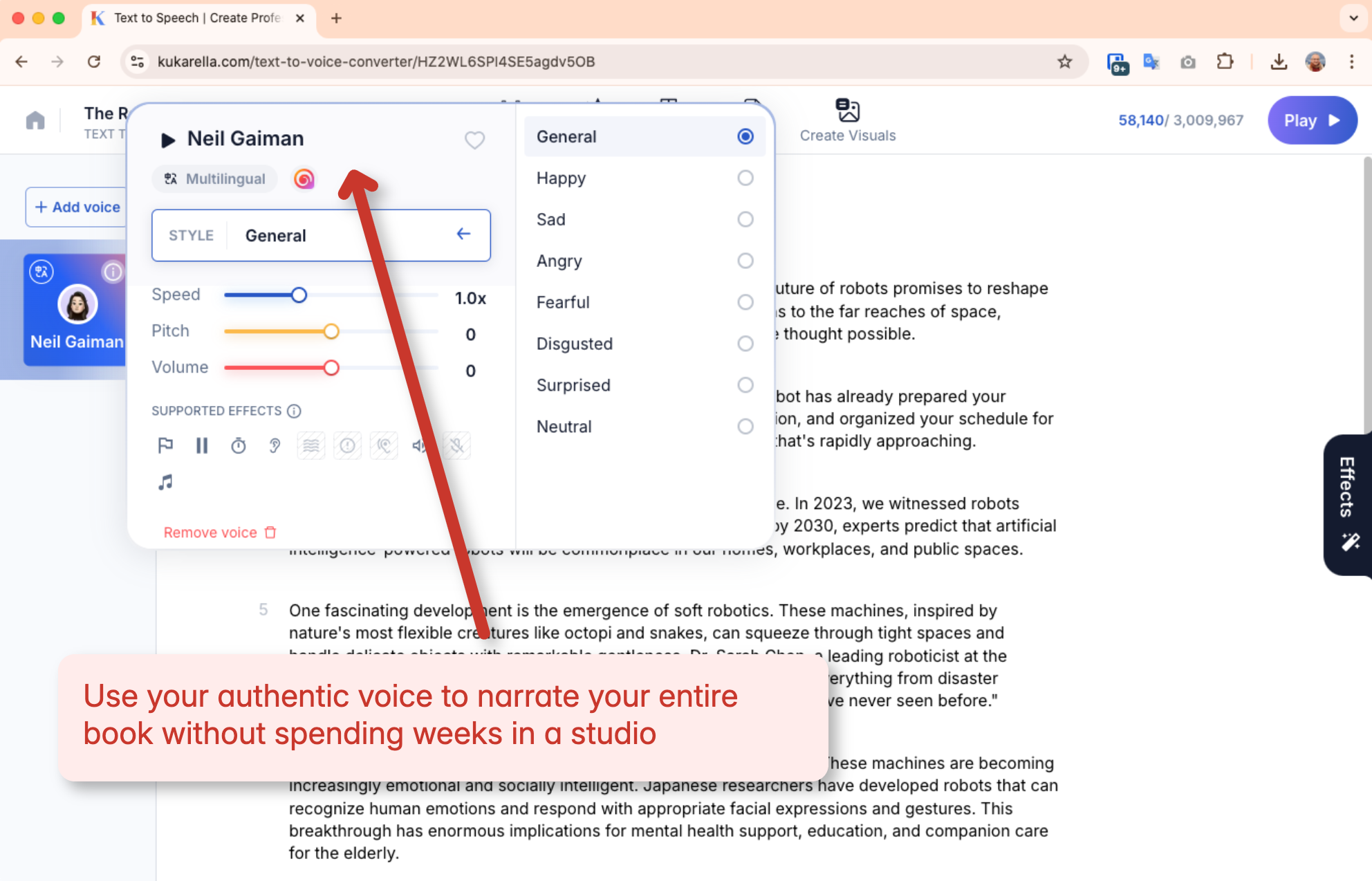
- Real-World Precedent: Acclaimed author Neil Gaiman has narrated many of his own audiobooks, including The Graveyard Book and Norse Mythology. He told Audible, "There’s a weird intimacy to reading a story out loud. It’s just you and the author. Or in this case, me and you." His unique, personal delivery is a huge selling point. But he is a trained and experienced performer.
- The AI-Powered Tactic: An author, even one without vocal training, can now achieve this. They perform a high-quality 15-second recording. This becomes their voice clone. They can then generate the audio for their entire 100,000-word novel. The result is a book narrated in the author's true voice, preserving their intended emphasis and meaning, without them having to spend 40 hours in a recording booth.
2. The Professional Narrator's Secret Weapon: The "AI Punch-In"
This is perhaps the most powerful and non-obvious use case for voice cloning in the industry.
- The Problem: As described before, fixing a single sentence in a finished audiobook is a technical nightmare.
- The AI-Powered Tactic: Professional narrators are now creating high-quality clones of their own voices as insurance. When a publisher requests a correction six months after the original recording, the narrator doesn't need to book studio time. They simply generate the corrected sentence using their personal voice clone. Because the clone is based on their voice under ideal conditions, the generated audio is a near-perfect match for the original recording.
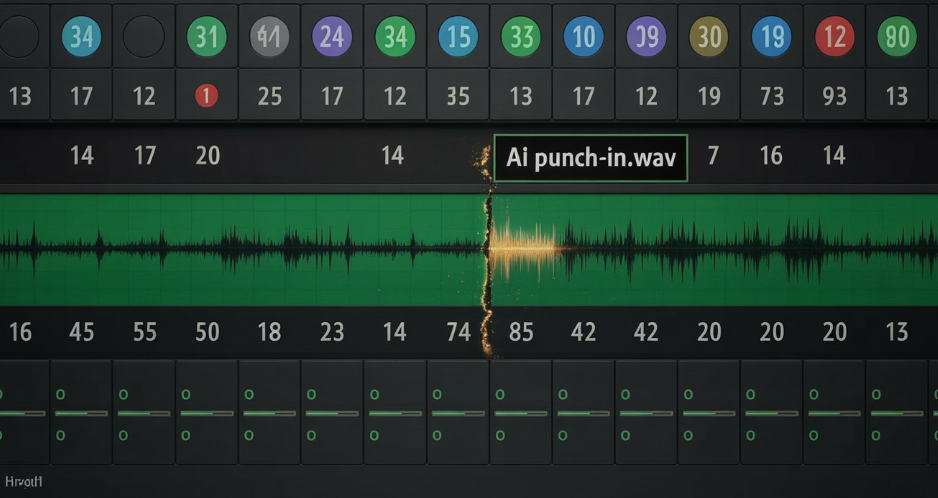
Result: A process that used to cost hundreds or thousands of dollars in studio and engineering fees is now completed in five minutes from a laptop. It's a career-saving tool for professional voice talent.
3. The "Living Course" Model for Educators and Coaches
The Strategy: A creator has a 10-hour flagship online course on a platform like Udemy or Skillshare. The subject matter (e.g., social media marketing, software development) changes constantly.
- The Old Way: The course becomes outdated. To update a module, the creator must re-record the entire video, trying to match the energy and audio quality of the original. Most don't bother, and the course slowly dies.
- The New Way: The course is built with a voice clone from the start. When Instagram changes its algorithm, the creator simply edits the relevant paragraphs in their script, re-generates the audio in their perfectly consistent cloned voice, and swaps the audio track in their video editor.
- Result: The course becomes a "living" resource that is always up-to-date. This dramatically increases the long-term value of the course and student satisfaction, with minimal upkeep.
4. The Vocal Consistency Engine for Epic Sagas
The Strategy: Narrating a multi-book series like The Wheel of Time or A Song of Ice and Fire involves dozens, if not hundreds, of distinct character voices. Ensuring a minor character sounds the same in Book 5 as they did in Book 1, recorded years earlier, is a monumental challenge for any human narrator.
The Challenge:
- Even for a master narrator like Michael Kramer, remembering the exact pitch, pace, and timbre for a vast cast of characters over several years is incredibly difficult. This can lead to inconsistencies that avid fans are quick to notice.
The Advanced Tactic:
- A narrator creates a clone of their own "base" narrative voice. This clone becomes the perfectly consistent foundation. Then, instead of relying on memory, the narrator becomes a "vocal sound designer," creating a unique "vocal recipe" for each character using the precise tools available for cloned voices.
For each character, the narrator documents a specific combination of settings. For example:
Character A (Gruff, battle-hardened dwarf):
- Style: Angry (to add intensity and grit)
- Speed: 0.9x (for a more deliberate, weighty delivery)
- Pitch: -2 (to create a deeper, more resonant voice)
- Volume: +1 (to give the voice more presence)
Character B (Wise, ancient elf):
- Style: Narrative (for a calm, storytelling feel)
- Speed: 1.0x (normal, measured pace)
- Pitch: +1 (for a slightly lighter, more ethereal quality)
- Volume: -1 (for a softer, more reserved presence)
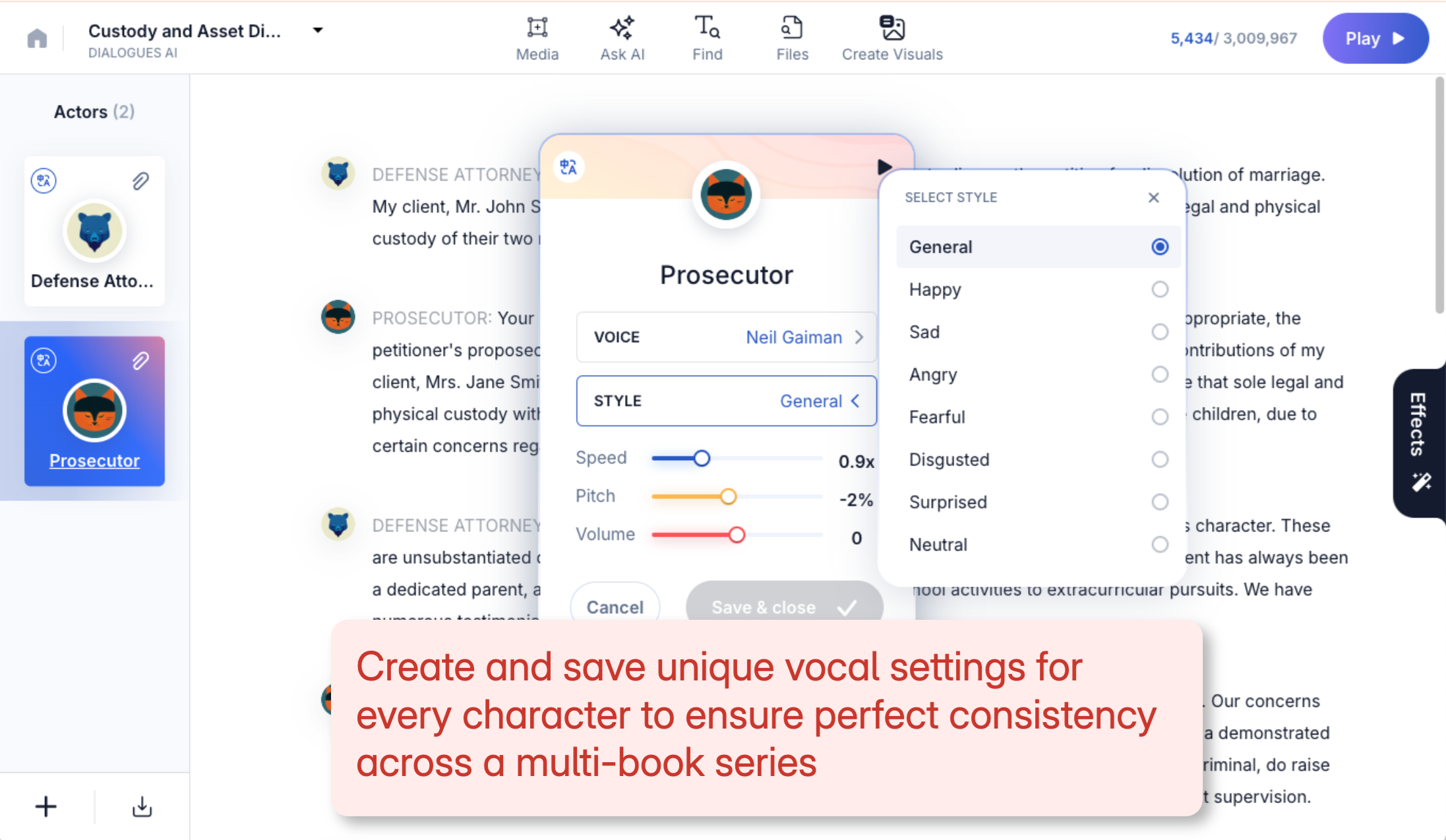
Result:
The narrator maintains a simple "character sheet" or spreadsheet with these vocal recipes. When it's time to record a chapter, they don't have to guess what the dwarf sounded like three years ago; they simply dial in the exact recipe. This applies mathematical precision to character consistency. The narrator can then focus entirely on the emotional performance of the line, knowing the core vocal characteristics are locked in and perfectly repeatable, book after book, year after year.
"Plot Twist" Moment: You Can Now Read With Your Ears
The conventional wisdom is that audiobooks are for entertainment or for people who don't like to read. But new research is revealing a different, more powerful use case: cognitive enhancement.
A 2019 study at UC Berkeley found that listening to stories activated the same cognitive and emotional parts of the brain as reading them. This suggests that the brain processes meaning from stories regardless of the input medium.
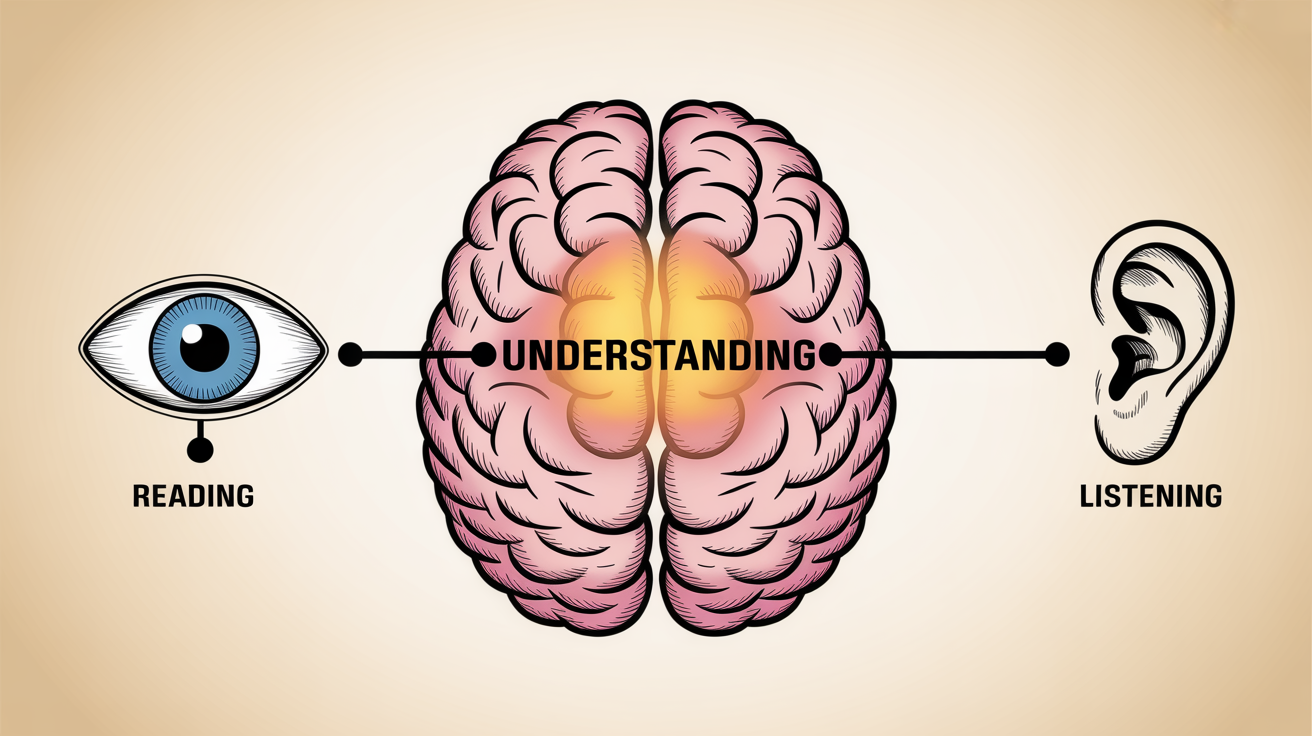
- The Twist: Voice cloning makes it possible to turn any long-form text into a personal, high-quality audiobook. This is not just for novels. Imagine:
- Academics: Turning a dense, 80-page research paper into an audio file to listen to during their commute.
- Lawyers: Converting hundreds of pages of case documents into audio for review.
- Students: Transforming every textbook chapter into a private podcast they can listen to while working out.
This technology democratizes the "audio-fy" button for text. It's not just for leisure; it's a powerful tool for professionals and students to process vast amounts of information more efficiently.
Troubleshooting & Problem-Solving for Long-Form Projects
Q: "How do I handle a 150,000-word manuscript? Do I just paste the whole thing in?"
A: No. While platforms can handle large amounts of text, you'll want to work chapter by chapter. This makes file management easier and allows you to proof-listen in manageable chunks. A typical workflow is to have one project file per chapter.
Q: "The AI mispronounced the name of my main character, 'Xylos'." How do I fix this everywhere?"
A: This is a critical hurdle. The best approach is phonetic spelling in the script. Experiment by spelling the name in a way that guides the AI, for example, "Zai-loss." Once you find the correct phonetic spelling, you can use a "Find and Replace" function on your entire manuscript before generating the audio. Some advanced platforms are also introducing user-specific dictionaries where you can pre-teach the AI how to pronounce unique words.
Q: "How can I possibly proof-listen to a 15-hour audio file?"
A: You leverage technology again. Use an AI-powered transcription service to convert your final audio back into text. Then, use a document comparison tool (like Microsoft Word's "Compare Documents" feature) to check the AI-generated transcript against your original manuscript. This will quickly flag any dropped words or major errors, allowing you to focus your manual listening on those specific areas.

"The Fine Print": The High-Stakes Ethics of the Narrator's Voice
- The Ownership Question: If an author pays to clone a narrator's voice for their book, who owns that voice clone? The narrator, the author, or the publisher? This is a legal gray area being actively debated by organizations like SAG-AFTRA (the actors' union). The current best practice is a clear, written contract that specifies the clone can only be used for the project in question and must be deleted upon completion.
- Royalties and "Performance": If a narrator is paid a royalty share for an audiobook, how is the use of an AI clone calculated? Does generating audio count as a "performance"? The industry has not yet settled on a standard, making clear contractual terms more important than ever.
- The Threat of "Zombie Voices": The most dystopian fear, as voiced by some in the voice acting community, is the creation of voice clones from deceased actors to narrate new works. This is a complex ethical minefield that will likely see legal challenges in the coming years.
Frequently Asked Questions (FAQ)
Q: Is the quality really good enough for a commercial audiobook?
A: As of 2024-2025, the technology has crossed a critical threshold. For non-fiction, educational content, and author-narrated fiction, the quality from top-tier platforms is often indistinguishable from a human recording for the average listener. For high-drama fiction requiring nuanced emotional performances, a top-tier human narrator still holds an edge, but the gap is closing at an astonishing pace.
Q: What if I want a different voice for each character in my novel?
A: For a dialogue-heavy novel, you can use a platform like Kukarella's DialoguesAI. You can assign different stock AI voices to different characters, and then use your own cloned voice for the "narrator" text that connects the dialogue. This creates a multi-cast "audio drama" feel.
Q: Is this expensive?
A: Compared to the alternative, it is astonishingly inexpensive. A professionally produced audiobook can cost anywhere from $5,000 to $25,000. Generating the same audio with a voice clone on a subscription platform can cost a few hundred dollars. The economic shift is seismic.
The age of the marathon recording session is coming to an end. For authors, educators, and even professional narrators, voice cloning is not just a new tool; it's a new paradigm, offering a level of consistency, flexibility, and creative freedom that will shape the future of long-form audio.